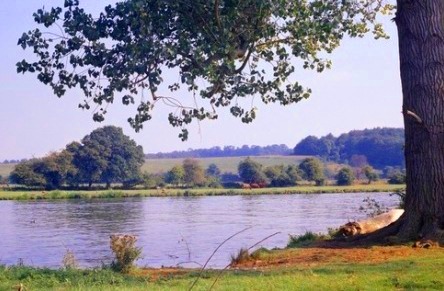Overview of the Thames Basin

The Thames Basin may not be one of the largest river basins by size, covering just over 16 000 km2, but with London, the UK's capital, at its heart it is the most densely populated river basin supporting over 13 million people.
The character of the Thames region is defined not only by the London conurbation but also by the rural areas of outstanding natural beauty, such as the Chilterns and the Cotswolds, which ensure the cultural and environmental setting of the basin is as rich as it is diverse.
Hydrology
The Basin is drained by the River Thames which rises from the Jurassic limestones of the Cotswold Hills in Gloucester and flows approximately 235 km to its tidal limit at Teddington Lock in London.
The region is one of the driest in the country receiving an average of 690 mm of rainfall compared to the national average of 897 mm; lower than average rainfall totals combined with a high, and increasing, population places significant pressure on water resources in an area that is already utilising available supplies.
Groundwater
About 40 per cent of public water supplies in the Thames Basin come from groundwater, principally from the Chalk aquifer , which forms the Berkshire and Marlborough Downs and Chilterns to the north of the London Basin and the North Downs to the south.
Other major aquifers within the basin are the Great Oolite and Inferior Oolite limestones of the Cotswolds and the Lower Greensand Formation of the Weald Basin.
More detailed information about the aquifers within the Thames Basin is provided, including aquifer properties data summaries.
Future pressures

The future of the Thames basin appears to be one of growth and regeneration with development planned in several strategic areas including the Thames Gateway, Olympic Park, Oxford, Swindon and Reading.
With this urban growth comes a need for careful resource and land management to ensure that stresses on the water environment are kept to a minimum.
Flooding, water abstraction and diffuse and point-source pollution are seen as particular areas of concern, especially against a backdrop of climatic uncertainty.
Contact
Contact Stephanie Bricker for further information






